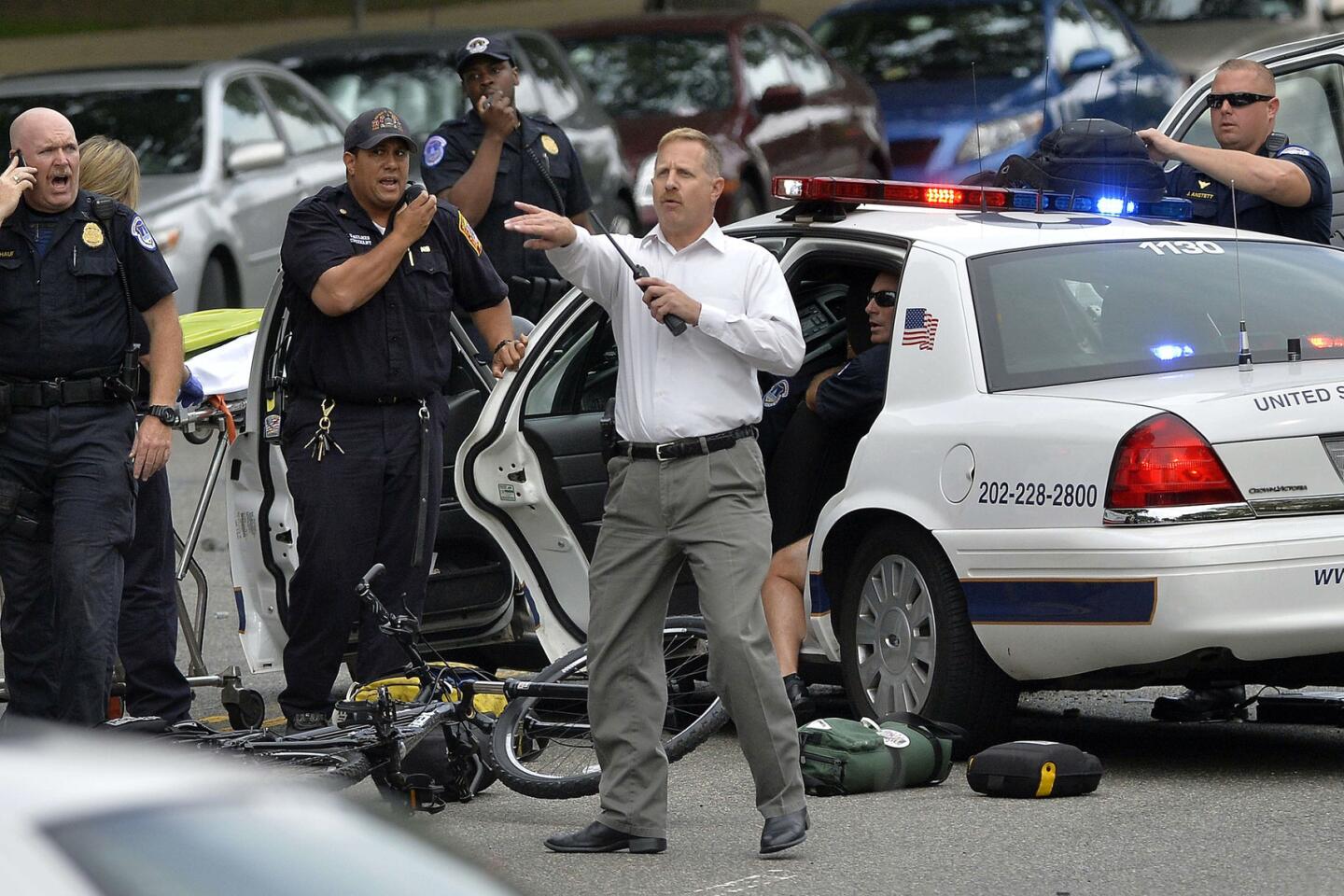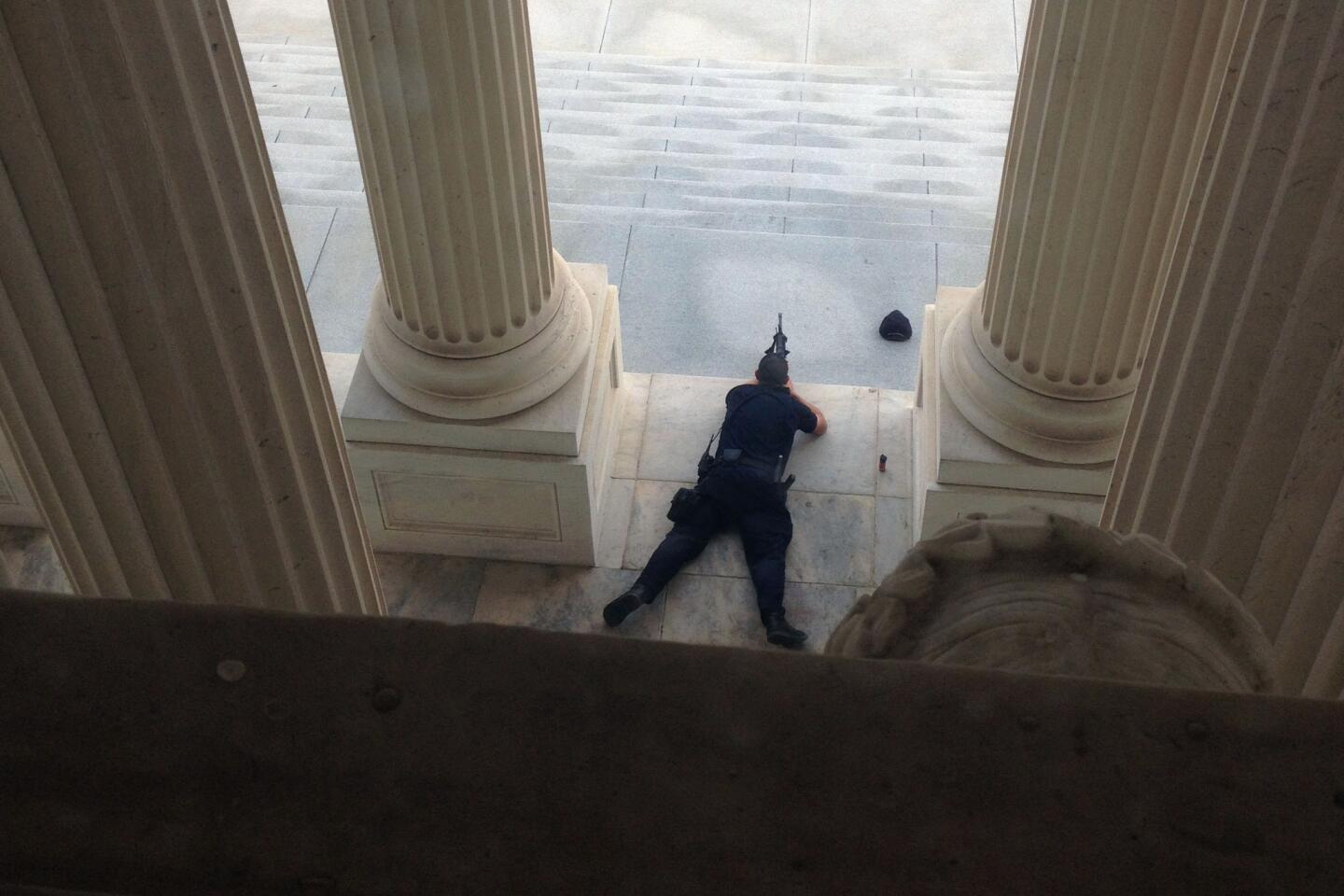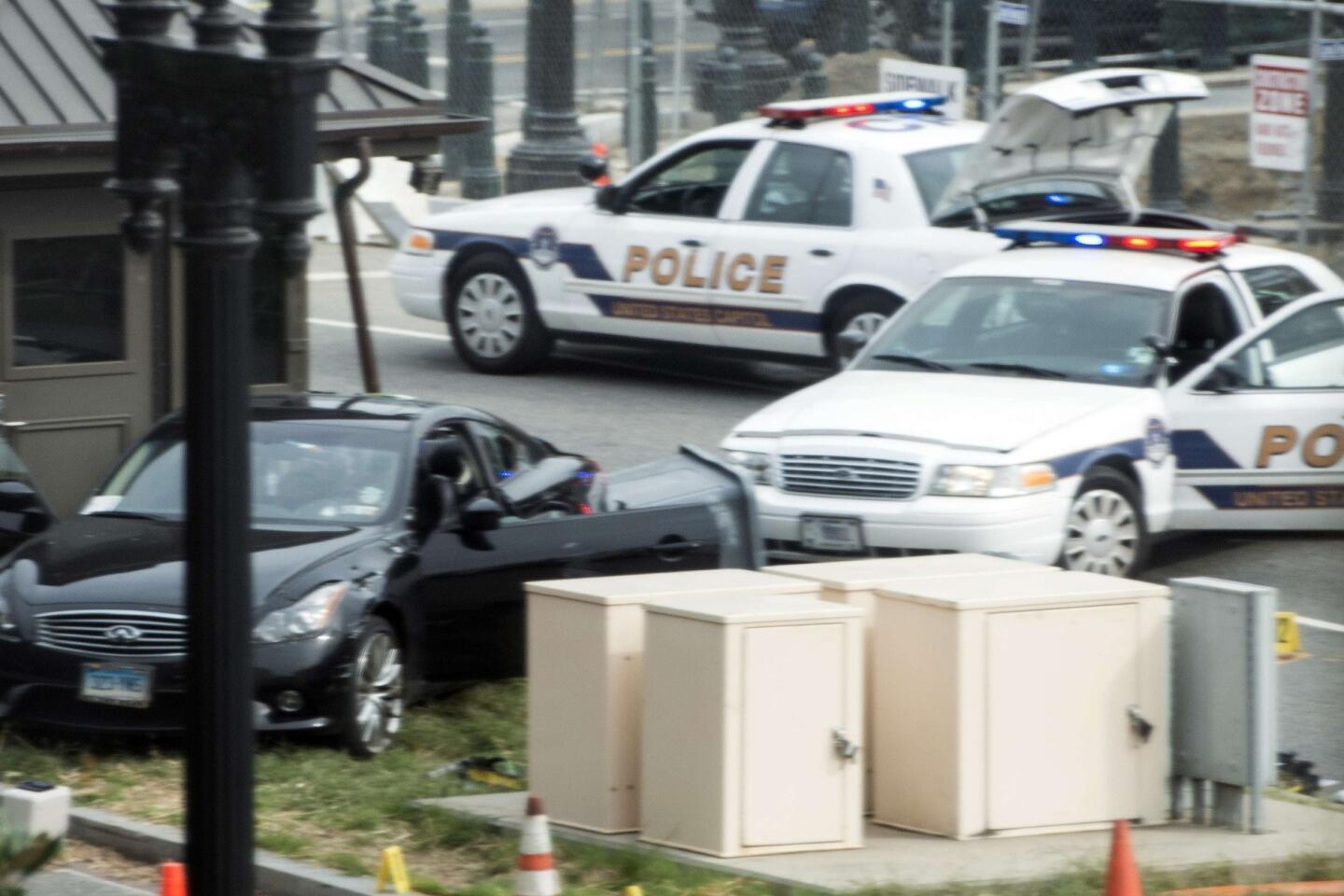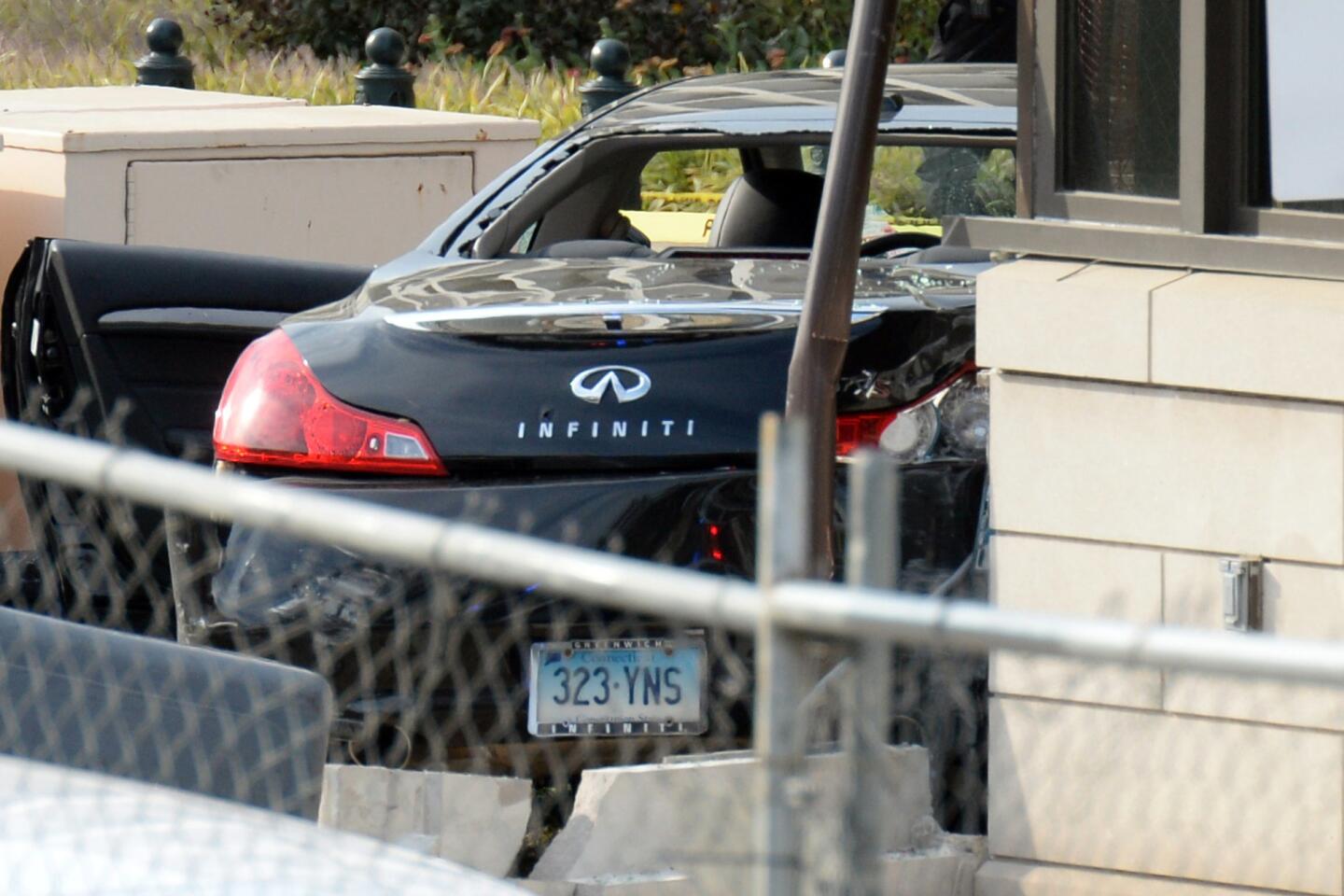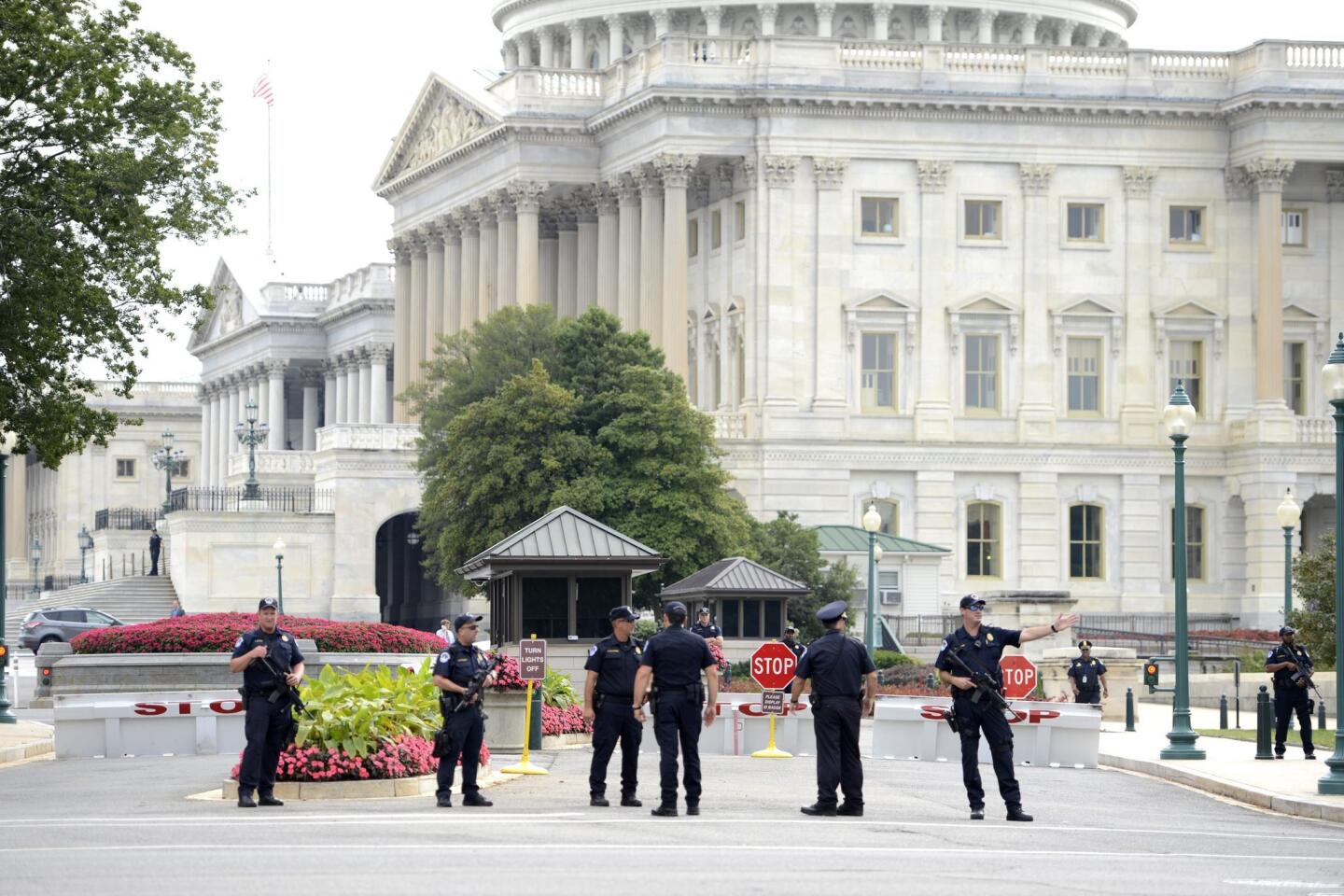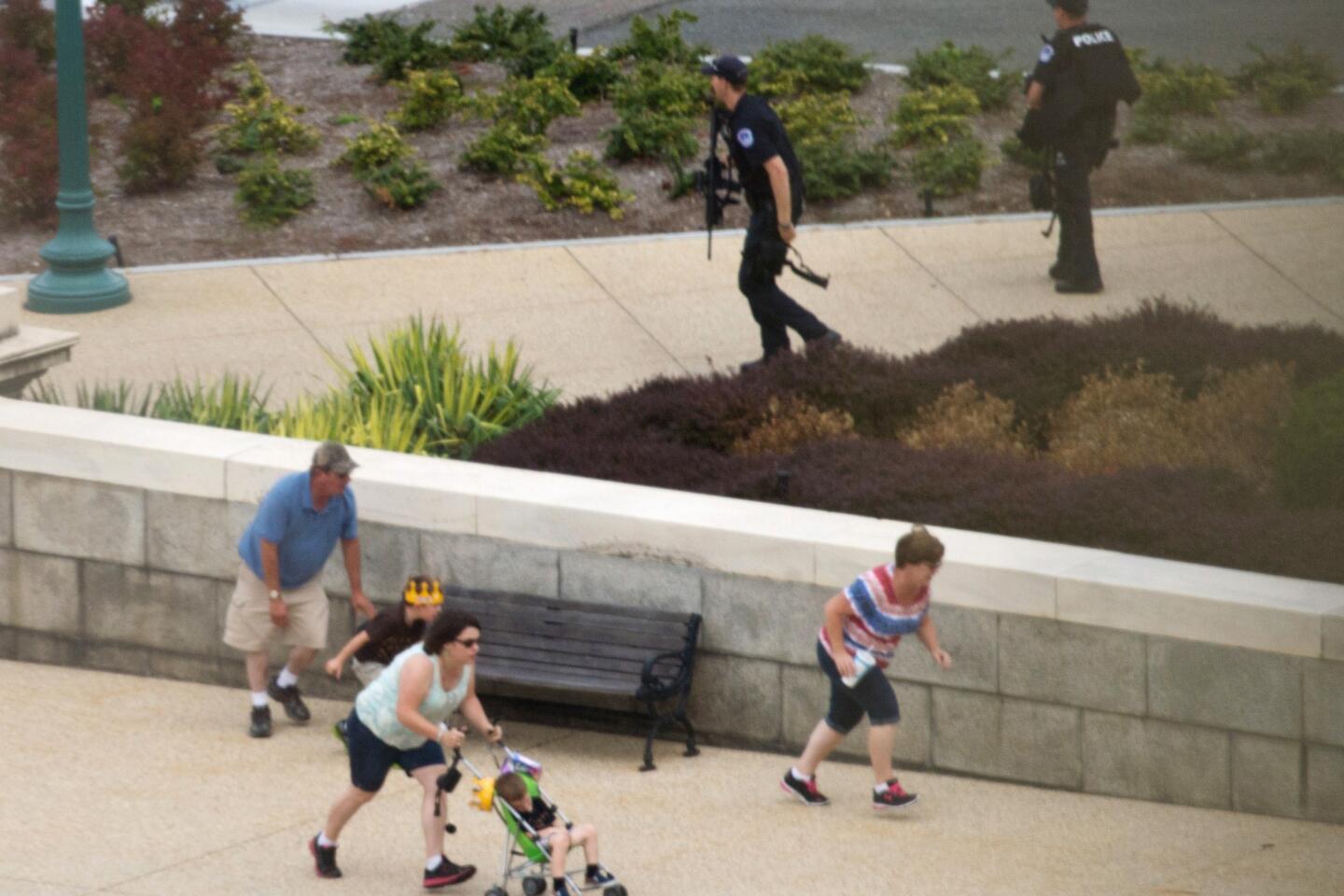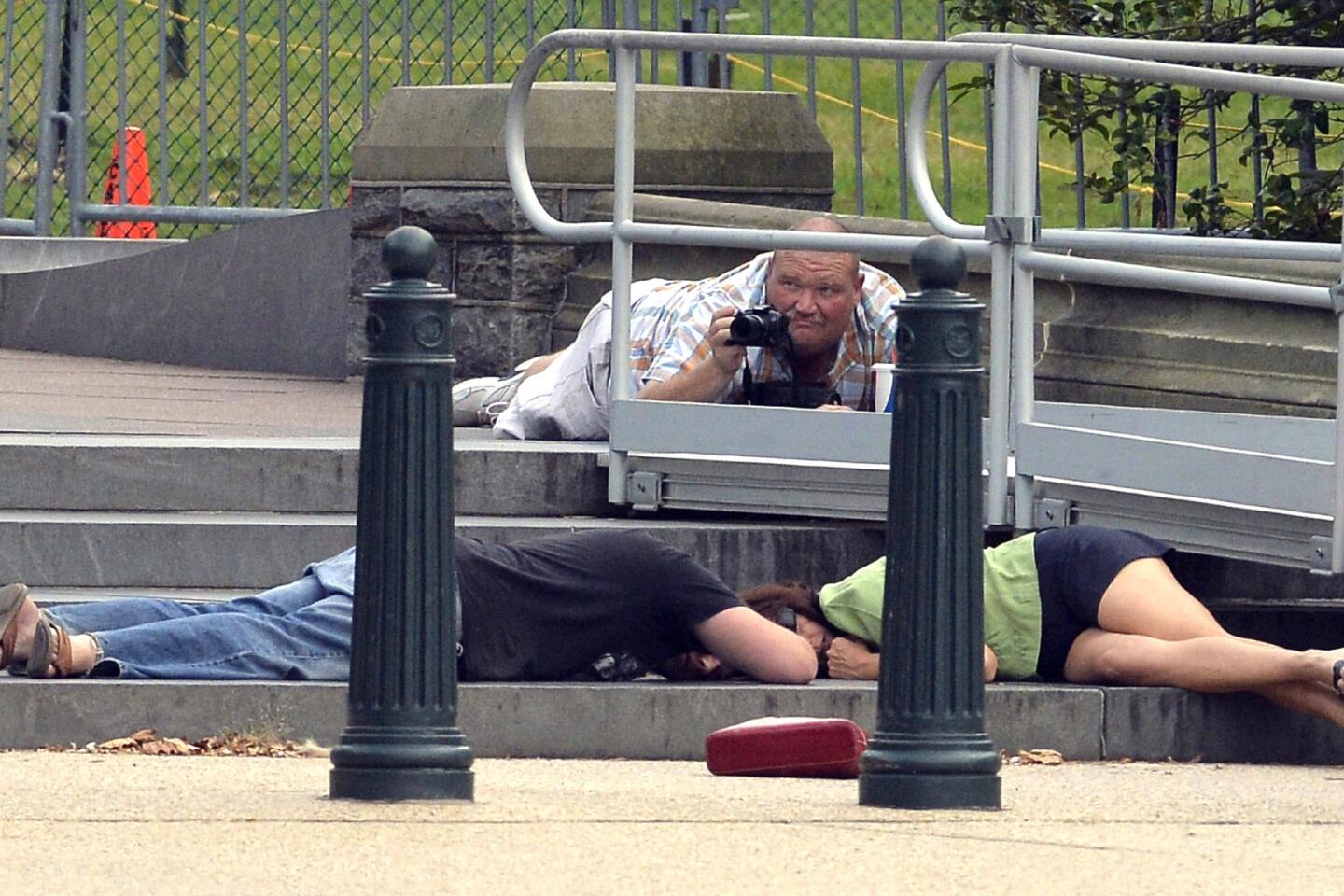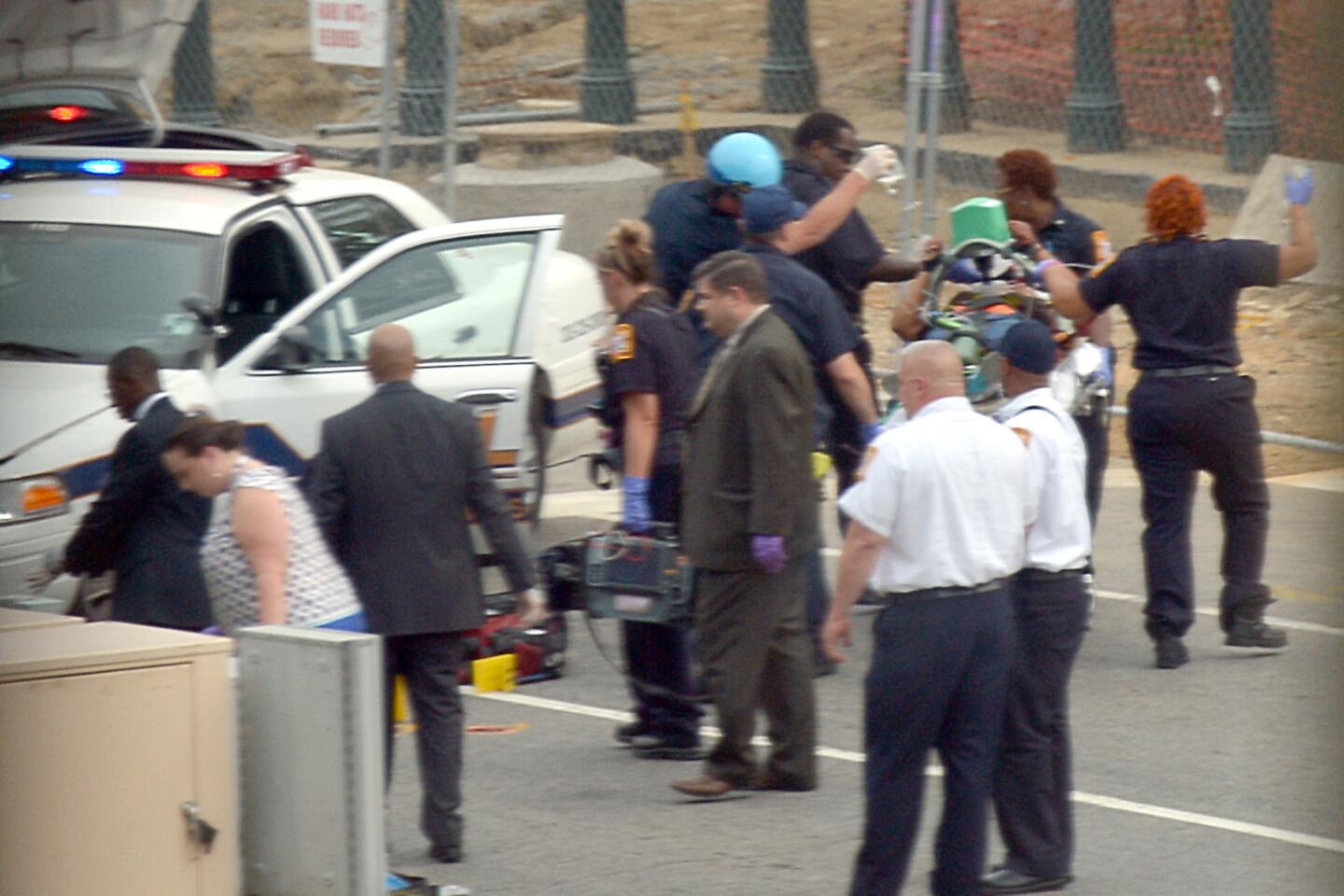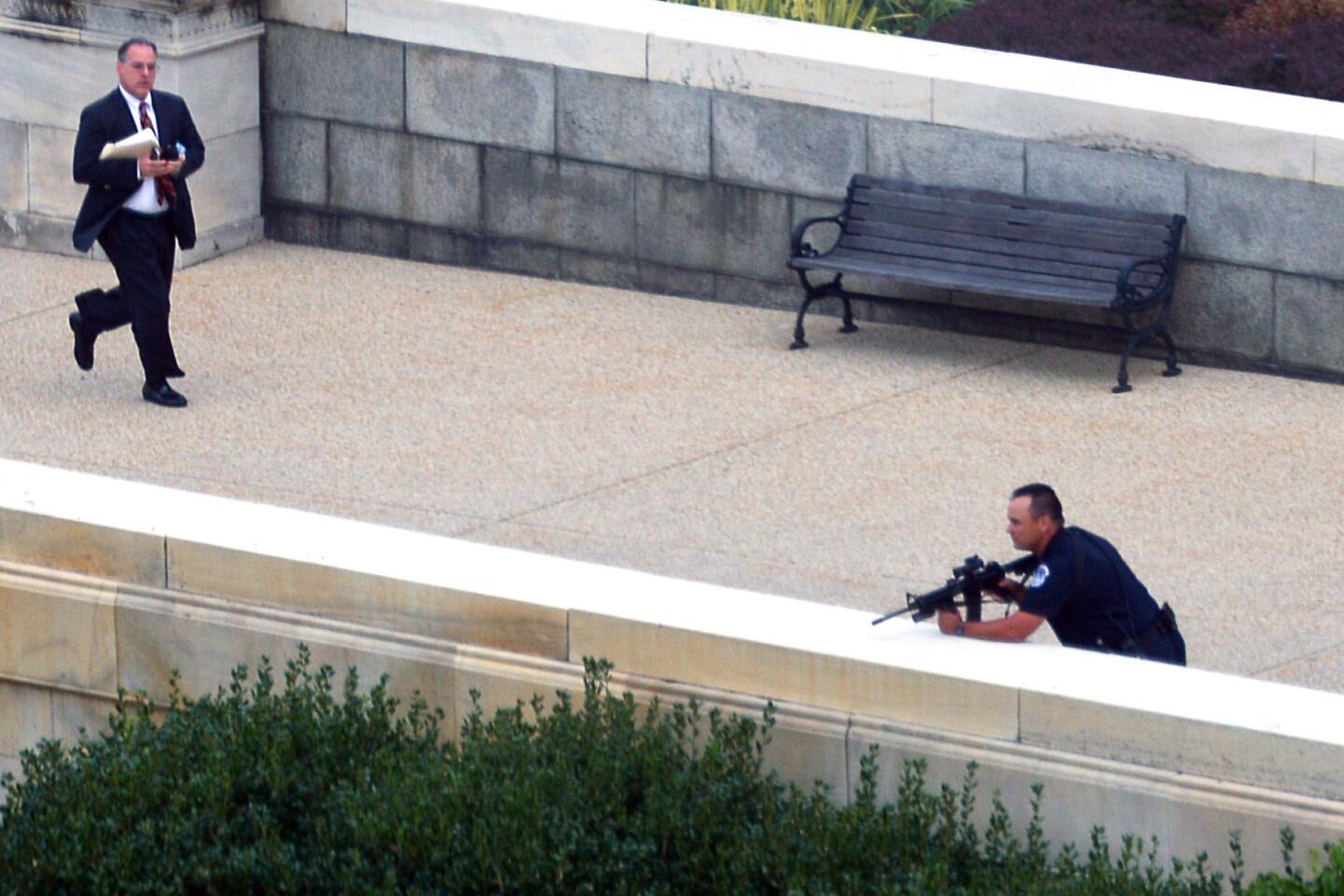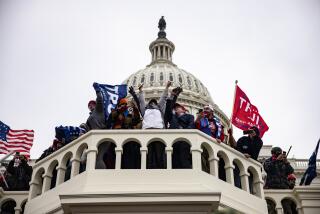When to shoot? Capitol shooting raises questions about force
- Share via
When someone tries to ram through barriers at two of the nation’s most highly protected facilities, do officers shoot? What if the driver’s car is carrying a powerful bomb? Or what if the driver is unarmed and has a child?
Details about Thursday’s chaotic shooting were scant as an investigation was only just getting underway; officials said a woman drove up against a barricade at the White House and then sped toward Capitol Hill with a 1-year-old child in her car before she was apparently shot to death.
Officials wouldn’t publicly confirm whether she was armed, but video taken of part of the incident showed a driver swerving away from several police officers with their guns drawn and then making a frighteningly fast getaway.
PHOTO GALLERY: Gunfire on Capitol Hill
“Our officers acted appropriately,” U.S. Secret Service spokesman Ed Donovan told reporters. But online, after reports circulated that the woman was unarmed, some observers started to raise questions about the decision to shoot.
The Los Angeles Times asked for some general perspective from Craig E. Geis, director of training for the California Training Institute in St. Helena, which teaches law enforcement officers about how to handle high-stress situations similar to the one encountered by police in Washington on Thursday.
What’s the standard most police use in deciding when to shoot?
It varies from agency to agency, Geis said. Most police have a standard that if lives are in danger, officers can use force. But the decision on when to apply force is often limited to an officer’s quick read on a crisis.
“It’s your perception of a situation, in a moment in time, whether she presents a lethal force,” Geis said.
How does the presence of a 1-year-old affect an officer’s decision whether to shoot?
“I don’t think you’d even see a baby under extreme stress,” Geis replied. “We see very little [in high-stress situations]; you have what we call ‘perceptual narrowing.’ … A lot of people will probably say, I didn’t even see the baby in the car.”
Officers would likely be focused on more threatening behavior, such as the woman’s driving, or trying to see if she had a gun or were about to attempt to kill someone, Geis said.
Just two and a half weeks ago, there was a mass shooting at the Washington Navy Yard. Does that affect police decisions to use force?
“I think the public is more sensitized to those kind of things. Officers face these things every day out on the street,” Geis said. “When we talk about a school shooting or all of these things that are going on, these are not new for law enforcement officers.”
The White House and Capitol Hill are high-profile political buildings, and there were multiple agencies involved with this shooting. Could you see them making different decisions on when to shoot?
Geis doesn’t know the U.S. Secret Service’s policies on when to use force, but said police agencies’ policies were likely to be similar. However, the decision to shoot can shift from person to person, depending on his or her frame of reference, Geis said.
“If you’re a guard in front of an embassy, and somebody runs around a barricade and continues to drive toward your position at a high rate of speed, what is your perception?” Geis asked. “Do they have something in there? Are they going to blow you up? Should you shoot the driver? I don’t know the answer to ... that question.”
But, Geis added, “If you’re a police officer in Palm Springs, and you ask them to stop, and they don’t stop, you can’t shoot them. There are some real differences in some of these areas.”
Any other reactions to the shooting in Washington?
“It’s a perception issue,” Geis said. “You’re looking at an individual that is unresponsive to commands, is driving erratically, and is acting in a crazy way, and all of that has to be very quickly evaluated. … I have to make an assessment of the behavior, I kind of project it, and I have to make a decision, what do I want to do?”
Police have to look at what was the perceived threat, not only to officers, but also what that person has the potential to do, Geis said.
“I don’t really think it matters if she had a weapon or didn’t have a weapon,” Geis said. “I think it’ll matter from the perspective of the public. But from an officer’s perspective ... Gunfire takes place in less than a heartbeat. That’s how quick an officer has to respond to survive in a situation. It’s a tough call.”
ALSO:
Gunshots fired near U.S. Capitol; suspect in custody
Arizona Sheriff Joe Arpaio to be overseen by monitor
Tunisian extradited to U.S. in Al Qaeda suicide bomb plot
Follow L.A. Times National on Twitter
More to Read
Sign up for Essential California
The most important California stories and recommendations in your inbox every morning.
You may occasionally receive promotional content from the Los Angeles Times.
